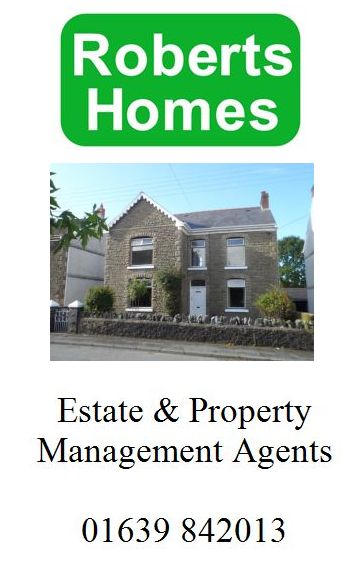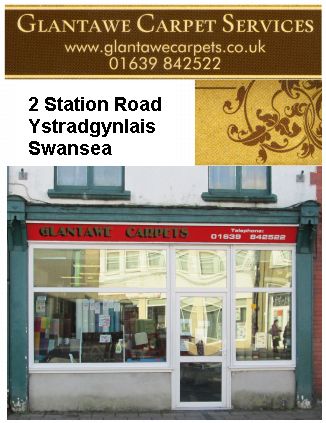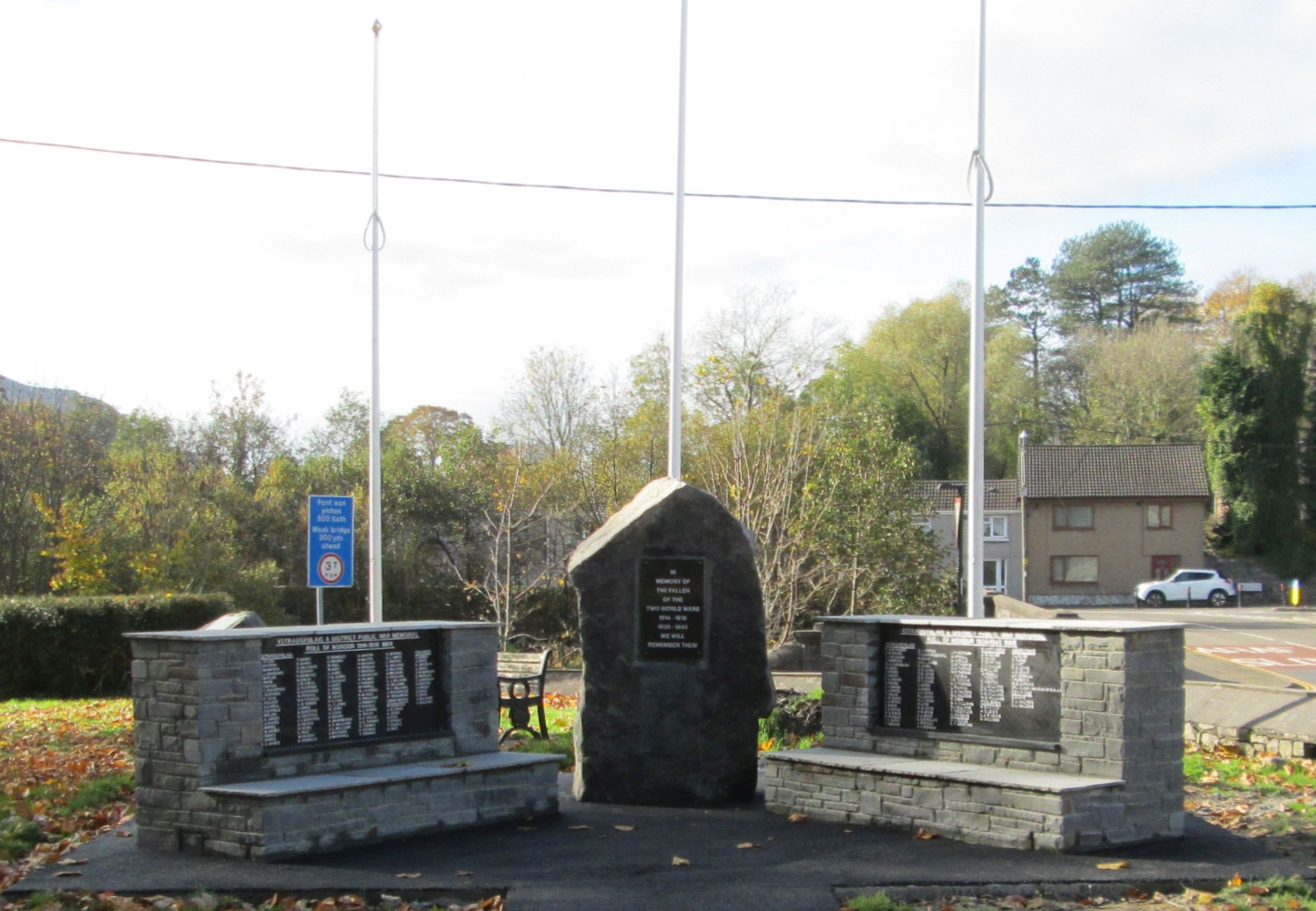Ystradgynlais & District
History and Heritage
History of Abercrave - A Retrospective
I have lived in the Valley for over 30 years so when I saw this article I was intrigued to read what the Valley was like 50 years ago until I realised the article was actually written in 1953. So for anyone else interested in the area of Abercrave around the early 1900's the following by D Watkin Morgan B.Sc., may help you form a picture.
- Val Trevallion
LIFE IN THE VALLEY 50 YEARS AGO
Abercrave has changed considerably from what it was 50 years ago. To relate its story in 1902 and 1903, or at any time in its history, the biographies of all who live there would be needed but although these are not available, it is still possible to form a well-defined picture of the daily life of its inhabitants.
The village has always lagged behind the more industrialised places in the Valley owing to its situation on the fringe of the coalfield and its proximity to the rural areas of Breconshire. The coal mines were opened at a later date than those in other parts of the country. The turn of the present century witnessed a growing population, followed by an increase in houses, built by the individual enterprise of the people who obtained their livelihoods at the local collieries.
The money for building purposes was borrowed privately and repaid at the highest interest. Low wages, long working hours, few amenities and often enforced idleness were the conditions under which the inhabitants lived. People aged quicker than they do today. Death was often certified as due to natural causes but in the light of modern science, was probably the result of industrial diseases. This was the time when miners saw little sunlight in winter and when old age pensions were just dreams.
There has always been an adequate supply of water in the village. According to Shoni'r Bont's local history which appeared in serial form in the 'Llais' of 1902, Abercrave had been noted for its springs for many years. Yet, in spite of this local people have to carry water to their homes. Dwellers at Trefleming carried water from a spring on the other side of the river just above the Yard House, originally built as officers for the local mines.
There were also springs at the Hennoyadd Farm, in a garden below the roadside opposite Llwyn Neuadd, at Pant y Cwrt and many other places.
The lack of water supply in the houses was a subject of correspondence in the valley newspaper in the early months of 1903. This controversy, known as 'Helynt y Lodgers' followed complaints made by the lodgers in the district: the housewives, while acknowledging this deficiency, retaliated by stating that the gentleman made no attempt to carry water from the springs. However, the people had to wait until 1908 for an improved system of water supply when the water works at Garwleisiau were opened.
The genealogy of local people is too vast a subject but 50 years ago most people could trace their ancestors back for hundreds of years. Many Englishmen were living there who had come to work in the paint works and had married local girls. On the closing of this industry they found work in the pits, and many lads had gravitated from Cardiganshire, Carmarthenshire and the rural parts of Breconshire.
This movement of population, characteristic of the whole of South Wales and made easier by the opening of railways and canals in the 19th century, brought with it, change in outlook. No longer were small communities isolated from the rest of the country. A new world was unfolding itself and an increasing population was the natural corollary.
People who could afford the fares were able to travel far afield but locally, travelling was on foot or on horseback, or by riding solid tyred bicycles and in cases of a few, by pony and trap.
On foot, one went to a place of worship or to a funeral in which the coffin was carried by relays of men. Often, people walked across the mountains to Llandovery or Brynamman.
During strikes, the colliers in search of work walked the labyrinth of paths and roads of the mountains to the Rhondda valleys. The exception to this mode of locomotion was that of the late Madame Patti of Craig y Nos, who travelled daily to Ystalyfera in her carriage and pair.
Yet the internal combustion engine was not unknown because the late Col Gough of Ystradgynlais and M Depeaux of the International Colliery, has steered this type of horseless vehicle. It is said that on one occasion, Col Gough’s car failed to negotiate the hill at Trefleming but fortunately it was fitted with a bar hook which prevented it rolling backwards. The journey home was made possible with the aid of a horse borrowed from a nearby farm.
While work in the mines was difficult, the lot of women was equally as arduous. Shopping was a problem in itself because the village had only three shops. Dressmakers and quilters were invited to the home to make the necessary clone; ready-made articles were not easy to obtain unless the women journey to the town for them. The present-day variety of food was not known. The grapefruit had not made an appearance and the banana was comparatively new. Welsh dressers with their lustre jugs and the grandfather clocks, were the proud possessions of many households as they are today.
In winter, there was very little time for outdoor activities except at weekends. Rugby football, which had started in 1893, was popular with the young men. In 1902, Mr Leyshon Watkins and the late Mr J Findlay were, the captain and vice captain respectively, while the late Mr A Wall of the Lamb and Flag was the president of the club.
In summer, the main pastimes were gardening, fishing and helping the local farmers, although cricket had been introduced. Since agriculture was the background of most people, it was natural that many still interested themselves in farming. It was a common sight to see a dozen or more men mowing afield of corn or of grass, using scythes with rhythmic swing. Just then there was only one mowing machine between all the farms. In addition to these activities, there were ploughing matches and sheepdog trials.
The local school provided first-class education for the children. The former Board School originally the British school at Pant y Cwrt had been transferred to the new building near the Post Office.
This establishment was the responsibility of the late Mr R J Lewis and his capable staff. The personal efforts and perspicacity of this great headmaster had far-reaching results and even today is tremendous influence is not moribund. The indebtedness of the village to this great man, who probably ranked with the premier schoolmasters of his day in the Principality of Wales, is enormous. His discipline in and out of school will always be remembered. He gained the respect of all and sundry and never did his advice go unheeded.
Discipline in those days was somewhat sterner than it is today. The gwialen fedw or birch rod was much in evidence in school and in the homes and often used with éclat. When this failed, there was always the visual embodiment of the law in Police Constable David Lewis, who soon checked any signs of delinquency.
Alongside the welfare of the children and the daily toil of the residents were the cultural and religious works of the chapels and the church. Mr R J Lewis had started evening classes and in order to build up a library he gave a series of lectures with the aid of a lantern. Among these were 'Canada a'i Golwgfeydd Rhamantus' and 'Rhyfel y Transvail'.
There had been a reading room at Trefleming under the patronage Mme Patti and Mr Moore Gwyn but lack of support caused it to close down in 1901.
Chapel sell their monthly Eisteddfodau, whose value cannot be overestimated. Possibly, without the educational or cultural influence of these institutions, it would not have been possible to invite the National Eisteddfod to Ystradgynlais in 1954.
In the world of music there were the local choirs and the annual concerts to which Kane the national winners of the day. Many people read contemporary Welsh literature but the influence of the Llais Llafur was probably the greatest factory maintaining the cultural life of the community.
This weekly paper, half in Welsh, was a journal as well as a newspaper. The editorials were forthright in opinion on current affairs. The researches of Crooks, Ramsay and Lodge on the atom and the award of the Nobel Prize to Madam Curie were not recorded but health affairs, industrial strives and political news were of paramount importance because the readers understood them. Further, the death of Dr Joseph Parry, the Proclamation of the National Eisteddfod at Llanelly and the elevation of Cochfarf to the Mayor ship of Cardiff, Cardiff was made a city in 1904, were personal matters.
Local Government was entrusted to its elected representatives in the persons of Mr D S Morgan of the Woodlands and the late Mr John Price of Pant y Cwrt two men who served on the parish council for many years.
The parochial register contained 203 names. At the time Ystradgynlais was divided into two sections and Abercrave was in the eastern part. The late Evan Watkins of Emporium was the district councillor, while the late Alderman Hywel Walters and Rev R M Morgan of Sardis, served on the county council. Problems of government, although not identical with present-day ones, were equally important and of absorbing interest.
In the public life of the village where the spiritual leaders: ministers of the local chapels. The Rev Lewis Jones of Tynycoed was closely connected with the growth of industry in the Valley. His famous lecture 'Dyrchafiad y Gweithiwr' is still read by students of the coalfield. It is noteworthy that he attained the highest honour that could be bestowed upon him by being made the President of the Undeb.
The late Rev C J Pipe looked after his flock at the Noddfa and the late Rev L Evans ministered at Carmel while the curate in charge was the Rev T R Davies.
Nonconformity was obviously well established long before 1900 and it is no wonder that the Education Bill of 1902 was bitterly opposed locally and throughout Wales. The Llais on 3rd January 1903 cried out for Nonconformity in religion and unity in industry.
Such was life at Abercrave in the years 1902 to 1903. The Coronation of King Edward VII had been celebrated with dignity and the world was at peace after the South African war.
Perhaps in the Coronation year of our beloveds young Queen, the proclamation of the National Eisteddfod at Ystradgynlais will revive native culture, our chapels will lead us spiritually and the war in Korea will terminate.
History often repeats itself and although many people who lived then are dead, they are not forgotten for, in the words of the Apocrypha,
"There be of them that will have left a name behind them, that their praises might be reported; and some there be, which have no memorial, who are perished as though they had never been and are become as though they had never been born; and their children after them..............
Their seed standeth fast and their children for their sakes. Their seed remain forever and their glory shall not be blotted out."
Further articles were written by Mr D Watkin Morgan of Abercrave in the Llais, but so far I have only come across this one below:
- The Story of a Great Swansea Valley Mining Engineer
Further local history of Abercrave can be found on the website of The Hub, Abercrave (Post Office, shop, cafe, and accommodation) including:-
- The History of Abercrave Post Office
Ystradgynlais - South Wales

Abercrave in the 1950s - thanks to the Hub, Abercrave for permission to use this photograph.
Ystradgynlais History Articles Interesting Lives Ystradgynlais Chapels of Ystradgynlais
Email Yeargroup:
yeargroup@hotmail.co.uk
Email Wolfian Design:
webdesign@wolfianpress.com

















